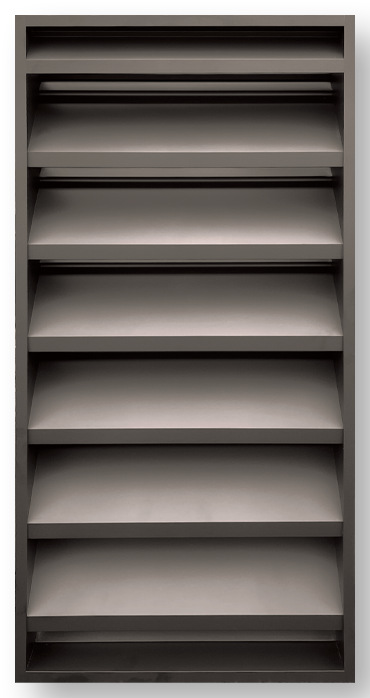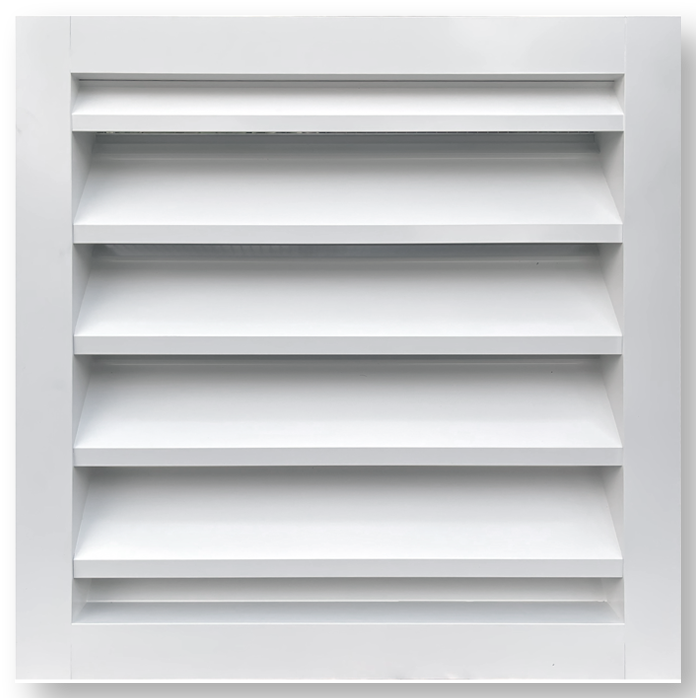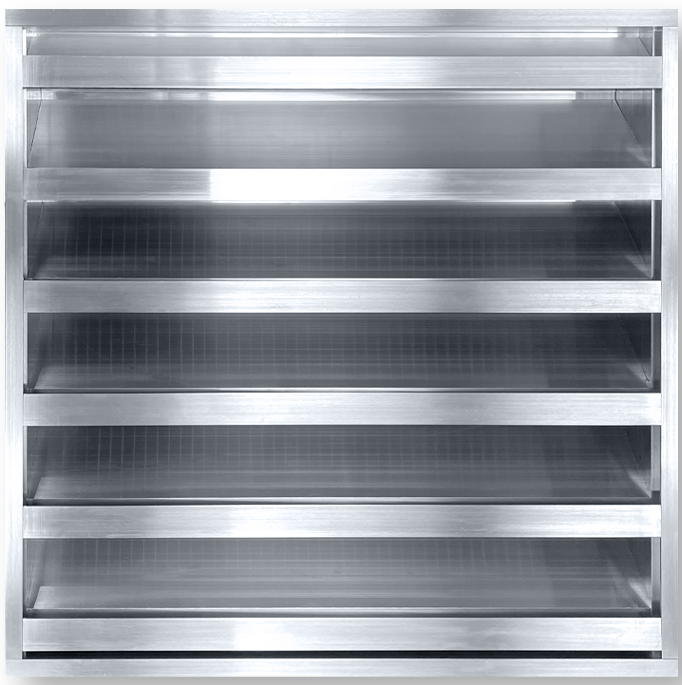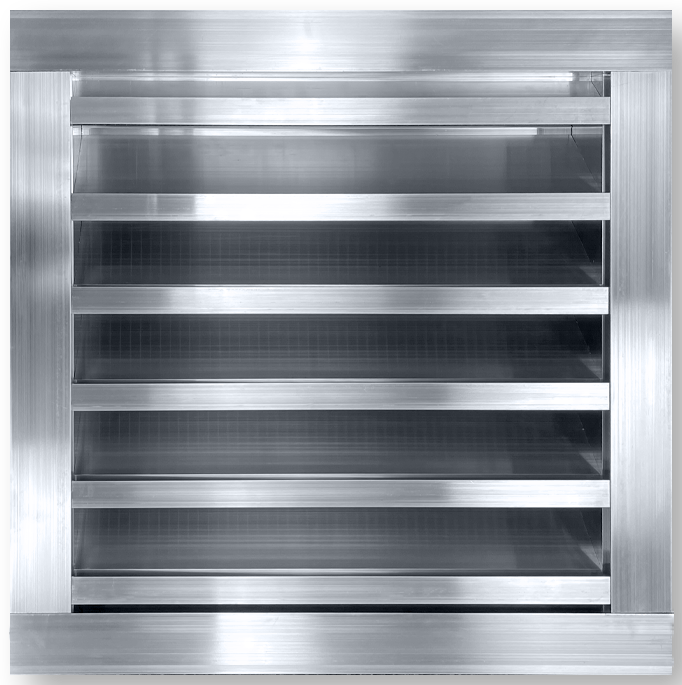Louvers are essential components in any building’s ventilation system, providing airflow while offering a degree of protection from the elements. However, not all louvers are created equal. The key distinction lies between drainable and non-drainable designs, each offering unique benefits and suited for specific applications. Understanding these differences is crucial for optimal building performance and longevity.
Non-Drainable Louvers: Simplicity and Airflow
Non-drainable louvers like the DAL4-CF or the DAL4-FF feature a straightforward design with angled blades that primarily focus on facilitating airflow. Water that falls onto these blades simply runs down their face. This simplicity translates to a lower pressure drop, meaning air can move more freely through the louver.
Benefits of Non-Drainable Louvers:
- Higher Airflow Efficiency: Their basic design minimizes resistance to airflow, making them ideal for applications where maximum ventilation is paramount.
- Lower Initial Cost: Generally, non-drainable louvers are less expensive than their drainable counterparts.
Ideal Applications:
- Exhaust applications where water penetration is less of a concern.
- Interior ventilation where minimal water exposure is expected.
- Situations where maximizing airflow is the primary objective.
Drainable Louvers: Superior Water Management
Drainable louvers like the DALD4-CF or the DALD4-FF take water protection to the next level. They incorporate integrated gutters within their blades and channels within their jambs, effectively capturing and redirecting rainwater away from the building’s interior. This design significantly reduces the risk of water damage, making them indispensable in challenging environments.
Benefits of Drainable Louvers:
- Enhanced Water Penetration Resistance: They offer superior protection against rain, preventing water intrusion and potential damage.
- Moisture Control: By minimizing water infiltration, they help prevent mold and mildew growth, contributing to healthier indoor air quality.
- Protection of Mechanical Systems: In air intake applications, they safeguard sensitive HVAC equipment from water damage, ensuring optimal performance.
- Increased Building Longevity: They contribute to the overall durability and structural integrity of the building by minimizing water-related damage.
Ideal Applications:
- Air intake applications where water intrusion is a significant concern.
- Buildings located in areas with heavy rainfall or wind-driven rain.
- Situations where protecting sensitive equipment from water damage is crucial.
- Any situation where minimizing water penetration into the building envelope is a priority.
Making the Right Choice
The choice between drainable and non-drainable louvers depends on the specific needs of your building and the environmental conditions it faces. If water intrusion is a major concern, especially in air intake applications, drainable louvers are the clear choice. However, if maximizing airflow is the primary objective and water exposure is minimal, non-drainable louvers may be sufficient.
When selecting louvers, the finish is a critical consideration. Dayus has a wide range of color choices for powder-coated finishes which provide exceptional color retention and resistance to weathering. If an option in the color chart appeals to you, call 888-855-7229 to talk to a representative.





